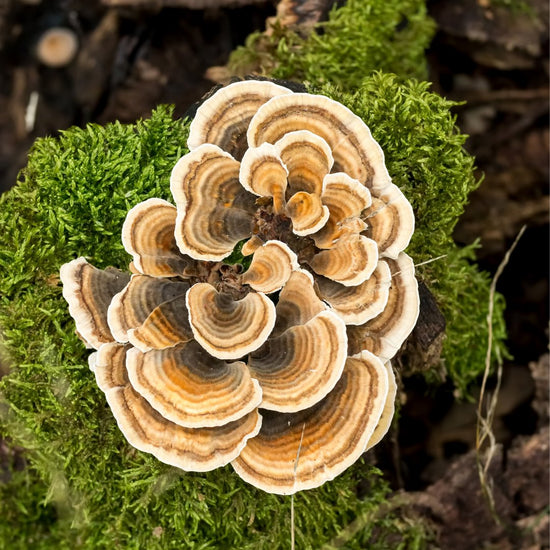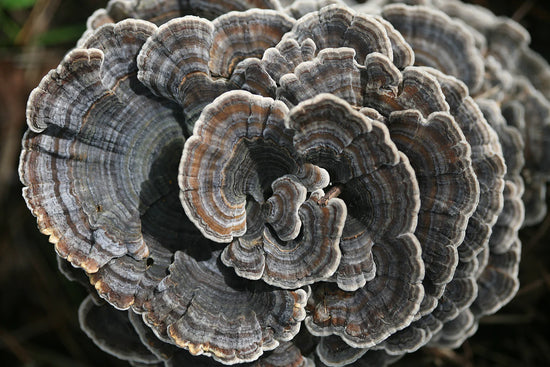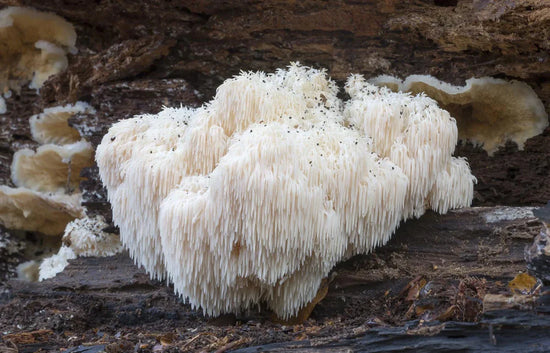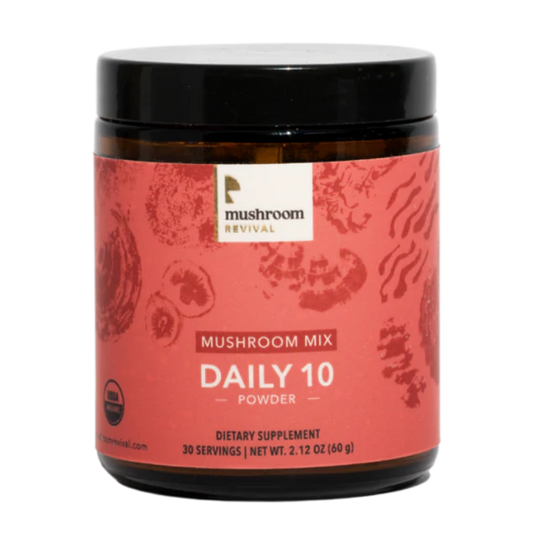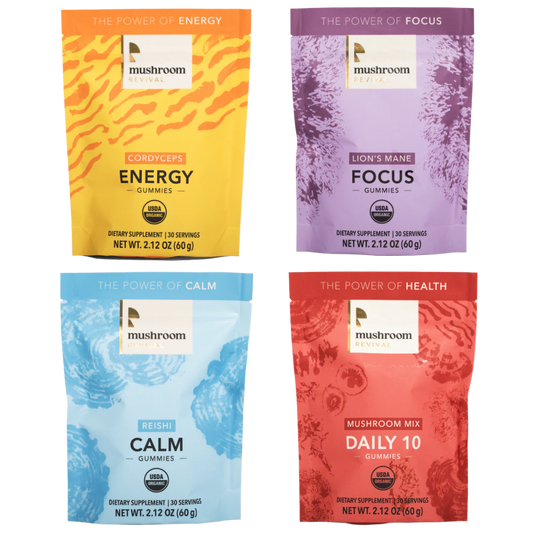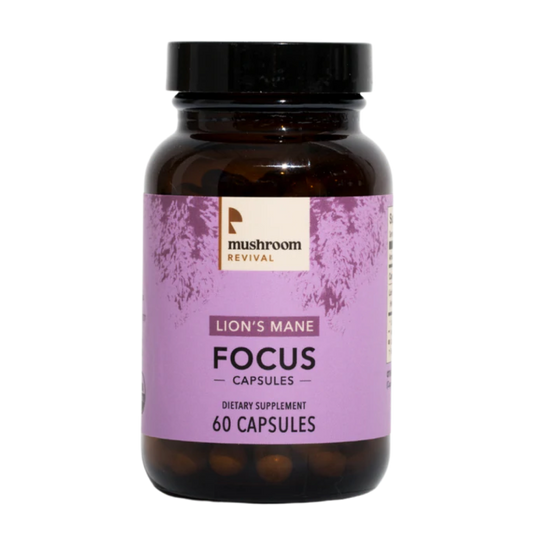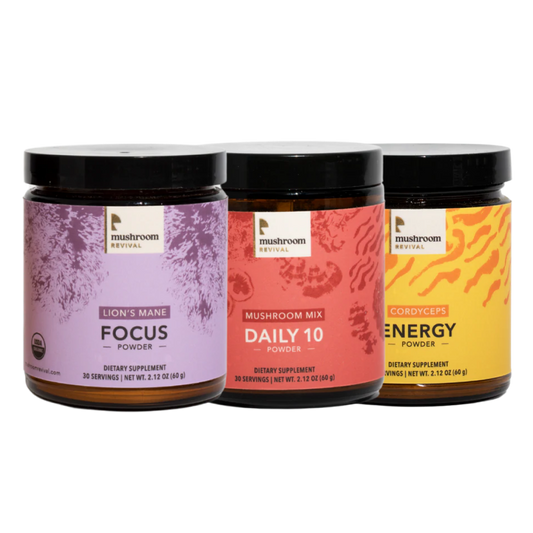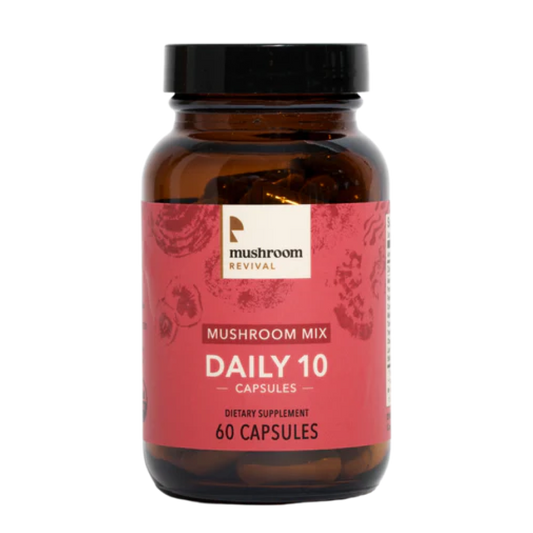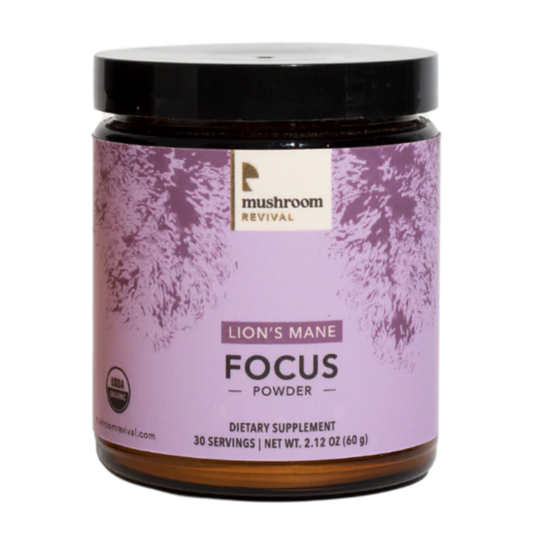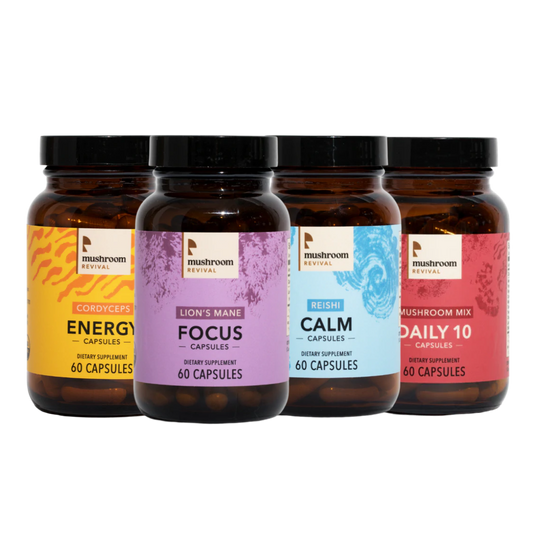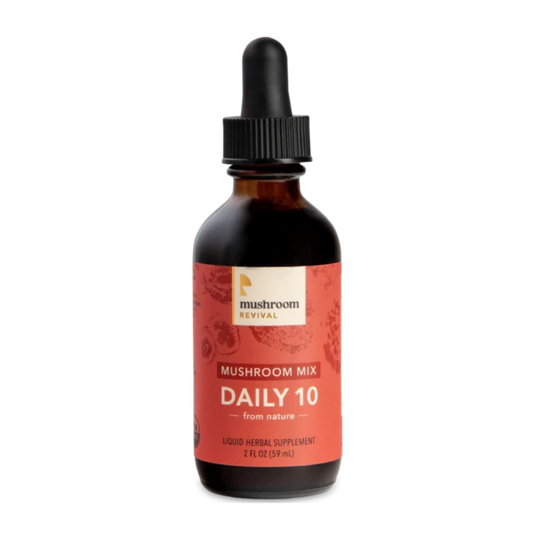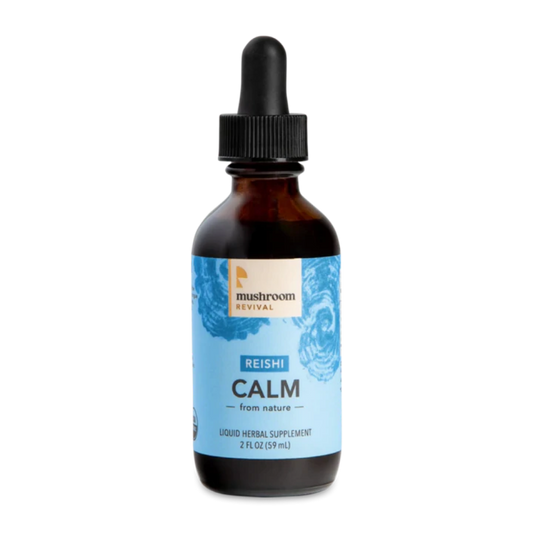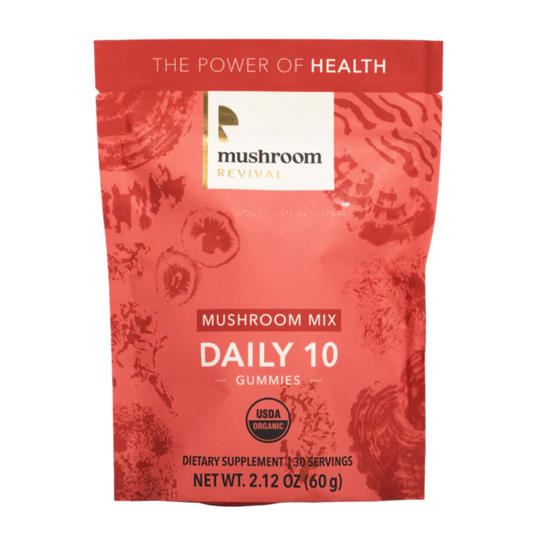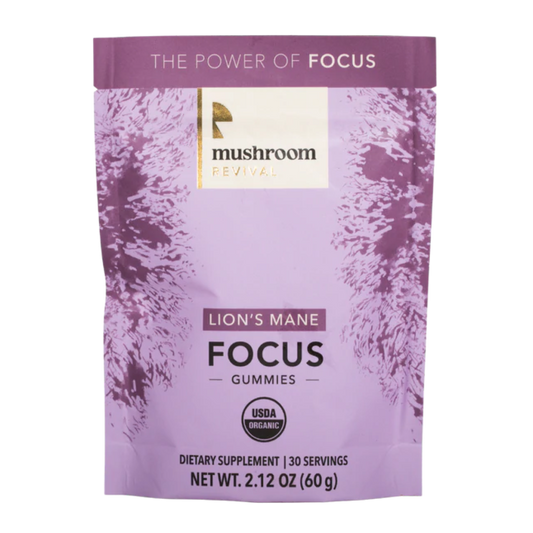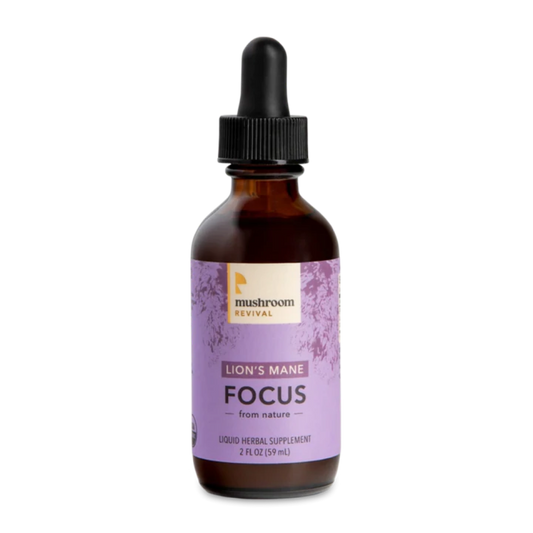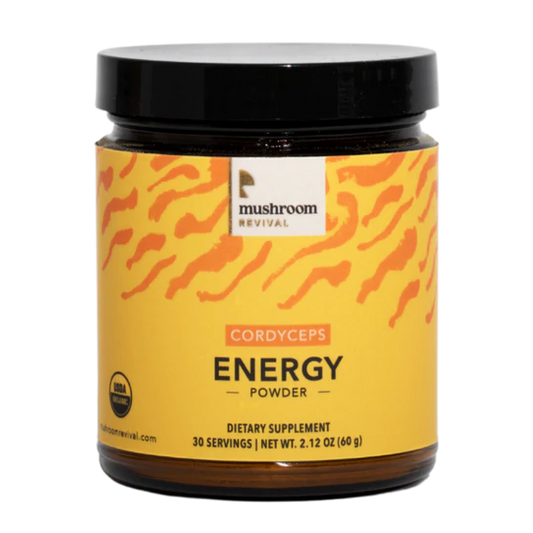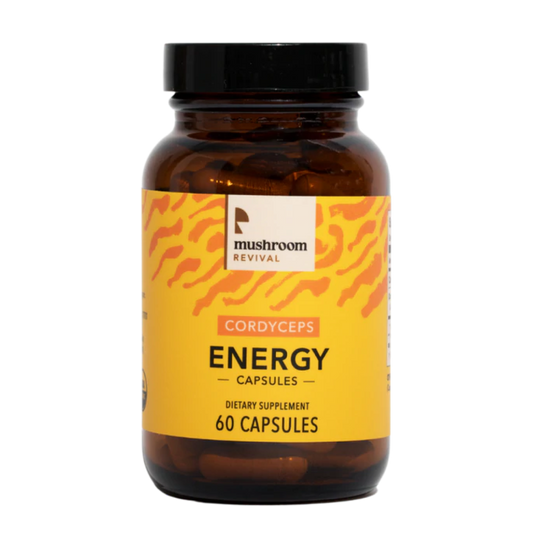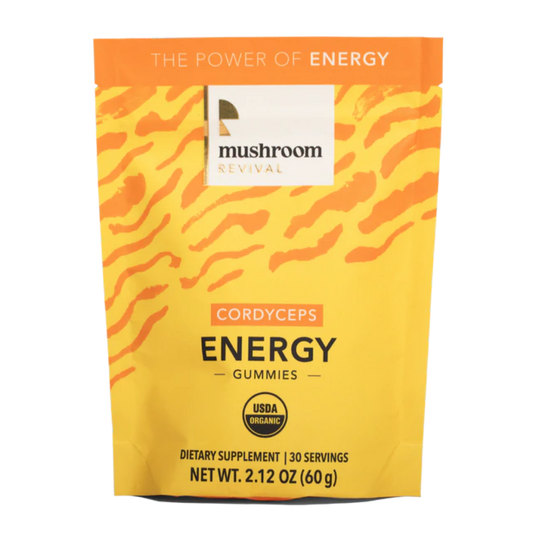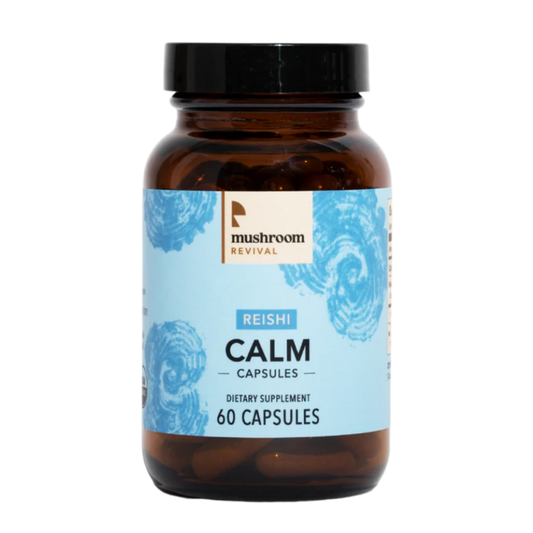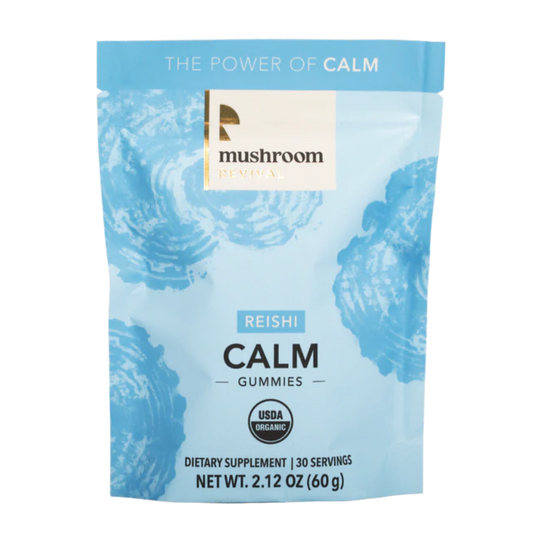Fungal Fragrances
Smell that? Could be a fungus. Aroma is everywhere, and much of that comes from microorganisms. Pheromones, toxins, attractants, hormones… chemicals are the language of fungi. Today we are joined by a mycologist and artist to discuss the olfactory world of fungi and how it is experienced by human beings. With an extensive array of scents, fungal fragrances inspired the first mushroom smell wheel created by Willoughby Arevalo and Isabelle Kirouac. Our conversation features stories around these unique aromas, the attempt to recreate the smells, the possible roles of these compounds in the ecosystem, and more!
© all rights reserved

Topics covered:
- Our sense of smell and our human relationship with it
- A brief overview of fungal aroma biotechnology
- 1-Octen-3-ol or “mushroom alcohol”
- The Mushroom Smelling Wheel: the variety of smells such as garlic, watermelon, DMT, sperm, shrimp, crayons, wet sleeping bag, etc
- Chemical communications and pheromones in mushroom forming fungi
- Willoughby & Isabelle’s artist residency in Mexico and the development of fungal fragrance catalogue
- Brief visitaitons on the sex life of fungi
- Willoughby & Isabelle’s Art & Fungi Project
Show Notes:
Art & Fungi Project: https://artandfungi.org/
Walking The Mycelial Web: https://walkingthemycelialweb.org/
DIY Mushroom Cultivation: https://newsociety.com/books/d/diy-mushroom-cultivation?aff=20
Making Sense of Each Other Future Ecologies Podcast: https://www.futureecologies.net/listen/fe-3-6-making-sense-of-each-other
DISCOVER OUR MUSHROOMS LEARN ABOUT OUR WORK
TRANSCRIPT
You're listening to the mushroom revival podcast.
Lera 0:04
On today's show, we're discussing mushroom smells, or fungal fragrances. Did you know that they're everywhere, and that fungi are used to obtain natural flavors and aromas that go into your food, your scented products, and so much more.
Alex 0:19
So everyone pull out the scratch and sniff card located under your seat, and we can begin the show. But first, the review of the week. And a note from our sponsors, aka us. So this review was a one star review, Ba ba ba from Obi Wan for sale came for the knowledge put off by the selling your products, not a fan of the long form commercials
Lera 0:47
I to dislike hearing commercials. But it's how we keep the lights on here at mushroom revival. Hot tip though most podcast apps have a handy icon that allows you to skip forward 30 seconds and I just give those a couple taps when I start hearing the ads and wait till the cue to get over the boring part and into the fun stuff.
Alex 1:05
No one is strapping you down and forcing you to listen to them. please fast forward if you don't want to listen to it. But it helps us we put in a lot of hard work into making these episodes every week. And we put in a lot of hours to make it happen. And as much as I would love, you know our bills to be magically paid, they have to come from somewhere. And this helps. So it helps when people buy our products and we love them. And we we get a lot of great feedback so you can listen to a show for the rest of your life. Not buy one product that's fine with us more than merrier. But it does help us out for some people to help support us. And that is the way we chose to do it. We didn't want to do outside sponsors from other weird companies we didn't want to do, you know, a Patreon where you have to pay to listen to the episodes, we didn't want to do any of these things. So we're going to get keep it mushroom based on products that we actually love and care about. And we made ourselves and they're pretty awesome.
Lera 2:07
At the end of the day, we appreciate all of your reviews. So please, we welcome you to share your feedback.
Alex 2:12
If you want to be featured like Obi Wan leave it we'll pick one review a week and share it with our audience. And they do want to give a plug. So if you're Obi Wan, please press that fast forward button. But anyone else who's interested this week at the end of the week, which we're airing, it is Black Friday, Cyber Monday, we're a small business. Again, we got to keep the lights on. So we're running a sale. It's up to 50% off our products on our site. We just launched the first world's first USDA certified organic mushroom capsules super freakin potent. And then this line of mushroom powders that we're literally frickin obsessed with. I mean we use it like four times a day. We're not powder people this is so oh my god, it's so freaking delicious, really good. That's all I'll say head to the site. No coupon code needed. We'll run it for a week. But I know this is the moment that y'all have been waiting for the meat of the episode, sniff it prepare your nose holes for fungal fragrances
Lera 3:33
so we are kicking off this conversation with an intro to how much of your day to day is probably already filled with fungal fragrances. And we were going to start with a short interview with a chemist about one of the most prominent smells and all of fungi, a compound known as one octane, three old or better known as mushroom alcohol. But that file has been lost. We are still trying to recover it from the archives of our hosting app. But don't fret because one way or another this relevant compound will be highlighted on the show in detail another time. But here's just a one liner on one OG tender y'all it is a compound that we associate with the mushroom smell you know that earthy metallicky smell that all mushrooms seem to have. It's a result of fatty acid breakdown. And one source says that the compounds tend to be concentrated in spore housing segments of the mushroom, although also present in the mycelium and perhaps you already know what we're thinking as new puppy parents, scrap the truffles. Let's get this pup to sniff out one off 10 Three ole we'll keep you posted on this endeavor. Enough about that we want to expose the lesser known fungal aromas and flavors that are all around you. Some examples are vinegar, MSG, citric acid, lactic acids, vanilla cheese, this list goes on. So variously Yeast can be fermented to create terpenes that are described as sweet floral rose like citrus. Many yeasts make acetates, which reportedly smell like bananas or peaches. And then there are lactones. And these can come from yeasts, but also trigger Derma species, which is the green mold we've all probably heard of as mushroom enthusiasts. And these species of trigger Derma can produce a coconutty lactone. Other yeasts can be fermented to generate lactones known as musks, which usually are produced from petroleum, but they are really important elements to the fragrance market. So the fact that we can brew yeast and create muskie compounds is pretty exciting for a more green chemical future. filamentous fungi metabolize folic acid into vanillic and vanillin. Cheesy flavors and aromas called methyl ketones are formed from Penicillium mold like Penicillium Rocco forte, you know, Rockefeller cheese. This stuff is super cool. So for more on fungal aroma biotechnology, check the show notes. But now for the fun part. We bring you our mycologist and artists friends from British Columbia, will it be our Veilleux and is about Kerouac.
Will it be and Isabel, thank you for joining us on the mushroom revival podcast. We'll be you've been on the show before almost two years ago now we talked about the sex life of fungi. And your book that you had just published DIY mushroom cultivation, which to this day, is one of my favorites, I recommend it to every mushroom cultivating newbie. Thank you. It's wonderful. I saw at the mushrooms smell wheel at new moon. That was my first introduction to you as a person in the myco world. And it just never occurred to me that mushrooms could have such an abundant array of smells,
Alex 7:06
Homo sapiens or not very smell oriented compared to other animals, like we just got a puppy and smells are the primary scent or sense that they go off of right. And so I was I mean, it's good practice to go into others sensory experiences that as humans, we were so site dominated that going exploring another sensory. Hello, it what do you call it sensory domain? Sure. Sure, is, is, is wonderful. I think it's a great practice. So thanks for making the wheel.
Isabelle 7:45
And as human, we just lead some some participants to a smelling walk. And as humans, we are disadvantaged because animals like dogs, like you mentioned, after nose very close to the ground. So all four legged animals with a head face on the ground have their nose just following the surface. So smell is always present in a much more heightened way. And as humans are noses are just placed up in the air and we just catch drifts of sense. So we invited people to walk with us around the community center where we lead our art in fungi project and just take the time to smell the world around them and take permission to get on all four and put their nose close to the ground. Then smell mushrooms but also smell the earth smell the trees, the leaves, the crash leaves, but also the asphalt or the concrete wall or the electrical wires and try to catch like what what can we actually smell? And how could we train or sense of scent and take permission?
Lera 8:52
Do you ever see your participants on this walk? smell something that they had never smelled before?
Willoughby 9:00
Yeah, yeah, there were a bunch of kind of, whoa moments through that experience. We talked a little about it afterwards. And for example, there are these these laurels that are planted commonly as hedges. And if you crush the leaf, it's got a benzaldehyde aroma which is also an aroma found in some mushrooms which is like the cherry pit or almond or apricot pit amaretto kind of smell. And that was really striking for a lot of people I think.
Isabelle 9:37
Yeah, and some people said like they were trained in certain areas like somebody I think has been like a MIG initial or something like this and was like the smell for him a metal was very familiar of heated metal or like the smell of number one that even Yeah, these kind of smells were very familiar to him as for me, I felt like I had more fun on trading nose in that area. And I couldn't really catch a lot of smell out of metal. But it was interesting also meaning and how people have perceptions that are different depending where they come from and what they're used to smell.
Alex 10:17
Yeah, and, you know, some people are musicians, so they're more, you know, sounds are, are way more powerful to them. And that's how the main kind of sense on how they interact with the world, other people are visual artists. You know, other people love to massage and to be touched, right? And other people not so much. Would you? Would you to say that your primary senses is smell? And did you guys did you to connect on that on? You know, I love smells, and all these different things where other people like, don't think about that. And they don't think, you know, oh, I have a favorite smell. This is how I interact with the world. Did that inspire you to make this we'll have, you know, this is how we perceive the world. And we don't we want to share that with other people.
Isabelle 11:10
Well, I don't, I don't see myself as a good just a good one sense forward necessarily. Especially not smelling like I feel like I'm, I'm a mover, I'm a dancer. So I'm definitely more trained in the sense of touch and proprioception. But, but that is something that's very poetic. And there's it's very linked to the emotion and the memories and the limbic system. And there's just so much we don't know. So we don't have a lot of vocabulary for sense. We usually just associate a smell to another smell. Because we lack the words to describe the smells. So there's a lot of mystery, and there's a lot of excitement. And it brings lots of stories. So I think what's really interesting to us is when we do these projects and bring this we'll just aromatic wheel to people and experiences with others. That there's it just leads to very interesting conversations, because everybody is kind of tapping into these memories and wanting to share. And yeah, I think that's that's really what's interesting is this, the sense of curiosity and wonderment, and that there's just so much to discover.
Willoughby 12:27
Isabelle and I are also partners in life and love in addition to being artistic collaborators. And I remember in the early times of our relationship, and still, we would really connect over tasting and experiencing the world through our senses. Like we'd love to get a flight of beer with our you know, little tasters of this or that. Or before our wedding my dad got us four different bottles of sparkling wine to do a blind tasting with and to decide not just with the two of us but with a group of friends to decide which one we wanted to be the wine for the wedding and turned out Isabel and I had the exact same ranking. And that was a good a good omen for
Lera 13:21
that is to cool. And a great segue into the wheel that you've made. So this this mushroom smelling wheel it is impressive. I mean, I don't know how many smells are on here. It looks like a couple 100 At least. And I was wondering if you could talk about how you compiled all these smells. Who did you ask who decided that? A mushroom smells like a wet sleeping bag or a wet straw or rose petals
Alex 13:50
or freshly cut grass
Isabelle 13:53
when it first started. We were in a residency in Mexico in a place called guava Nakazato art and Ecology Center. And one of the projects we worked on was this wheel so we have this idea there to work on mushrooms smells and like the first time that I've seen a a wheel like this I guess was like a decent like wheels for smelling coffee especially because I worked a lot in in a coffee roaster when I was younger. And I remember going to this place in Colombia and they were growing coffee and also we could roast coffee and they had all these little bottles we can smell there were all fragrance that were present in coffee smells. And so I spend a lot of time just smelling these bottles and had a lot of fun because drinking way too many espressos to try different kinds of coffee and smell them and taste them and and so we were like, What about one of these aromatic we'll look for mushrooms because they are so When he smells and mushroom, and so we started researching and,
Willoughby 15:04
and I have a lifetime of direct experience learning from mushrooms since I was a young child, and also a lot of learning about mushrooms through books and mentors and community. And so I have long note, kind of built a vocabulary for mushroom aromas. By spending a lot of time, first of all smelling mushrooms, second of all reading field guides. And in any half decent mushroom Field Guide, they will talk about the smells of mushrooms when the smells are interesting. And some, many field guides actually have an odor descriptor for all the mushrooms in the book, even if it is, quote unquote, not distinctive or mild. And, and often that is a crucial identifying feature for many mushrooms. So this was kind of a starting point, just that that body of knowledge that I had embodied through my practice over the last three decades. And so I started just making lists. And I and I kind of thought of rough groupings, we were definitely inspired by the wine aroma wheel and other aromatic wheels. I think the wine aroma wheel may have been the first of the sort. And it was by a person named Dr. Noble, who was a she was a chemist, or in the study of wine anyway, in California, I think that came in the 80s or 90s, something like that, while back anyway. And so we've been inspired by that and the subsequent wheels that have followed but to our knowledge nobody had ever done one for mushrooms turns out we have since creating this one found another one. That's also good. It's not quite as extensive as ours, so and that one was also made by a mushroom person, of course. But we started by making lists kind of just out of my head, but then I literally have spent many, many hours flipping through field guides. Looking just to find the the aroma discussion under each mushroom, and I know some mushroom groups tend to have potentially potent smells more than some other groups. So I paid specific attention to certain genera and families and certain sections of certain genera. And, and that was kind of the start for it. And when we were in Mexico, we we created a piece that was displayed at the exhibition of the residency. And we created a user friendly like a user interactive installation where the public would come and instead of having the names of the things written out, we simply had the broadest categories, plant animal, fungal, mineral, bacterial and chemical. And then around that margin of this cloth it was set up about like as a round table cloth on the round table. We had 44 small ceramic cups, little cute little very typical locally made ceramic cups in the local style. And within each one, we put a substance from the from the the wheel we basically figured out out of all these smells, which ones could we gather there in rural Mexico in the matter of a couple of days. Before leading up to the exhibition, and then
Isabelle 18:58
we went all around town to find grape soda to find watermelon rind
Willoughby 19:04
cucumber or ripe pear. I remember going to the market this root cellar and be like where's your ripest pair can can you bruise it a little bit for me? They collected water from the center. It was like just kind of actually sink like the kind of gunk from deep down in the sink drain. chicken poop
Lera 19:29
smell.
Willoughby 19:31
Yeah, the we had fortunately, we had eaten shrimp a couple of days before the exhibition. And so I made sure to save some of the shells and heads.
Isabelle 19:41
We had some brassica funk from old broccoli that was kept in the fridge or maybe even outside differently to rot voluntarily. Yeah. matches for sulfur
Willoughby 19:55
pesos for metallic smell.
Lera 19:57
Oh yeah.
Willoughby 19:59
I love it. ens iodine that is used for purifying drinking water and bleach
Lera 20:07
crowns. I'm seeing that one I don't know. grands. I
Willoughby 20:11
think that was added by krans was added by one of our participants later. We didn't have crowns on the list at that time. But yeah, we had 44 different smells. Some were very popular, some caused noses to go upward.
Isabelle 20:26
And someone decided not to include for that version in Mexico because there's a lot of kids also that interacted with the wheel and one of the smell was sperm and so we decided to avoid putting down yeah
Lera 20:42
I feel like that is a common odor with mushrooms, though. There's a lot especially
Unknown Speaker 20:47
in Austin,
Willoughby 20:49
and Austin, far out ones and the genus sweat.
Lera 20:55
So the anosmia genus is the very spermy smelling one.
Willoughby 20:59
Yeah, but they've also got weird floral and fruity smells that we're on the nauseatingly sweet and, and then sometimes fishy smells as well. And sometimes it's a combo of several MCs. They're fun.
Alex 21:17
Do you have like, the Top Weirdest smell on your wheel? Are they all pretty? They're pretty far out there. I mean,
Lera 21:26
what are some of your favorites? Like I would love to hear a love story of one or more mushroom smells that both of you have
Willoughby 21:36
a smell that we particularly enjoy or that we like the story of both,
Lera 21:41
either or whatever makes a good show, you know?
Isabelle 21:48
Talk about the armpit of the Buddha. Oh,
Willoughby 21:50
yes. So this Yeah, so this one is comes from my my dear friend Paul Kruger, a longtime founding member and past president of the Vancouver Mycological Society, co author of the mushrooms of hydraglyde and one of our local elder experts around here in CO Salish territories, and he he's an elder mycologist too rarely eats mushrooms anymore. I think he used to eat a lot more mushrooms and he does now I think his body got sensitive to them. But at one year at our annual Manning park for a I was cooking for for the whole for a for about 60 of us and did a pasta dish with Shih talkie in it. And he decided that he would have that and he would eat the mushrooms. And he said to me what with a mouthful of Shi talkie. It's as if I'm licking the armpit of the puja last lost it it's so good. So that when that one ended up in the animal section, terrestrial should be a whole section for human smells because there's quite a few
Lera 23:14
Yeah, I see it on the Buddha dirty gym socks
Alex 23:20
is good one. Do you come across that that is the most common that.
Willoughby 23:28
common amongst mushrooms?
Alex 23:29
Yeah,
Isabelle 23:30
I think I'll have the earth is really common because it's often attached to the restroom. So often, I mean, sometimes they would smell like Earth
Willoughby 23:42
was attached to the earth. Yes, it goes both ways.
Isabelle 23:44
Exactly. So I feel like often especially smelling the stock this this smell would almost always be very often come across there's also the mushroom smell, which is kind of the classic white Agaricus
Alex 24:02
right now. I'm sure those are the two go to cents for people who maybe haven't are not very articulate of how to narrow down that smell. For most people I run into like beginners it's like it's either earthy or just mushroomy right and they don't articulate that further.
Isabelle 24:28
Greed and sometimes also I found a lot of mushrooms not to be that distinctive but they are some that are so distinctive. So often what we are trying to do is also find these so even people don't have necessarily a lot of experience or even knowledge that that there are other scents and mushroom would be very surprised and it really comes across clearly. For example if we smell a prince mushroom, the marzipan forward is very obvious. There's also the garlic
Willoughby 24:57
mushroom that we have for us We'll session three of these times, we just had three. And they're so tiny. I don't know if any of the listeners if you've ever encountered this mushroom, it's a tiny little mushroom. The cap is smaller than a dime, the stock is barely thicker than one of my beard hairs. And the flesh is incredibly thin. But the smell is overwhelmingly garlicky. Like, you can smell it from a distance. Wow. They're just so so my new. So that's an exciting one. And that is a mushroom that some people do use as, like a garlic substitute as a flavoring in foods. So that's
Lera 25:43
interesting. If anyone out there is have like a garlic allergy, I don't know if it's the same compound that's created.
Willoughby 25:50
Definitely similar pounds with sulfides sulfuric compounds of some sort. I don't know a lot about chemistry myself. And almost everything I do know about chemistry I learned from fungi. So there's that I there's, there's a lot of these associative and compound smells that we added later in the process, through doing the practice of having a smelling wheel session. And what that looks like is we lay out this smelling wheel, which we actually hand drew on a roughly four foot square piece of white fabric. We lay it out either on a table or on the ground in the middle of a circle of people and we pass around mushrooms. And we talked about their smells and when we placed them on the wheel. And when I came to New Moon mycology Summit. That was when a lot of this associative and compound smell section first appeared. And so we've got some incredible smells there like morning dew from a baby tree. Chucky Cheese ball pit, Flintstone vitamins, hot football. New on dirty clothes, warm dusty lightbulb, it's so poetic. And this this really just illustrates to me the power that smell has to transport people through time and space into into a sensory memory. Yeah, and we've had a lot of people be like, Oh, smells like my grandma's attic or something like that. Something very familiar and bringing them somewhere. And I love when that happens.
Alex 27:36
I see DMT on here, which is such a distinct smell. And it's pretty crazy. Because that was stupid. Um, um, I yeah, I want to hear it because I, every once in a while, like, once every few years I'll be out. I'll be outside and a smell that smell. And I'm always wondering where what it's from. And I know certain plants have that kind of smell. And it honestly every time I smell that smell, it's kind of like a flashback for me. And I get into that space. And it's really transformative on, you know, a psychedelic level. I mean, it is very powerful. I'm curious what your story behind that that DMT do tap on the
Willoughby 28:27
wheel. I was doing a smelling wheel session at the Sunshine Coast mushroom and seaweed festival a couple of years ago is also in BC. And there was a mushroom. Oh goodness, I'm trying to remember what mushroom it was. It could have been a waxy cap of some sort. It could have been Aphrodite Hola, Olivia, which is often compared to bubblegum, but I feel it was one I've smelled some mushrooms that, to me smelled like a combination between Jasmine and burning brakes. And I had this person from the public smell this very particular floral slash chemical kind of smelling mushroom. And her eyes lit up and she says that smells exactly like DMT I'm like, I'm writing it on the wheel. And having tried DMT a couple of times. I I was like I smelled it and I said Oh you're right. It does
Alex 29:37
it's it's very distinctive. I mean, it's yes. Yeah, that's That's nuts.
Lera 29:43
That's what I love. All of these are. I mean, it only takes one time to have smelt a hot dusty lightbulb, you know or some of these very specific smells.
Alex 29:56
Yeah, we're just talking about like every time we give our dog bath or shower? I mean wet dog. Like I feel like all dogs smell the same. We were just talking about this, like, Why do all wet dog smell like wet dog? And that's what your real I mean, it's crazy.
Willoughby 30:13
It's really a compound smell. And I think I was just caught like a glimpse of a title of something or something like that. It was actually a discussion about the wet dog smell and what actually is it and what makes it up. But I'm sure it has a total combination of, you know, factors largely from their microbiome. I would, I would assume, but I don't really know. There's one mushroom that is interesting. The Smiths Amanita Amanita smithy at smithy Ana, which is a potentially deadly poisonous mushroom that can cause kidney failure. And it is sometimes mistaken for matzah, Taki, or pine mushroom. And they can grow in the same habitat. And they looks kind of similar. And they both have strong smells, the matzah. Taki being very famous for its kind of musky, spicy, animal, animal and spice kind of aroma. This one, I've the best description I've heard of it. And I kind of have only gotten to smell this mushroom a couple of times is a combination of wet dog and chlorine or swimming pool. So I like to always make a joke about time to change the hot tub water.
Alex 31:39
Yeah. Wow. Are there. I know. You know, like cilantro is a great example of some people. I think it's their jeans or something. But some people think it just tastes super soapy. For whatever reason. And I think there's like a couple other examples of things like cilantro. But have you come across things where you know, you're doing this kind of wheel activity. And half the people are like, Oh, that smells disgusting. And the other people are like, Wow, that smells like roses or something like that.
Willoughby 32:11
Well, I think, I think I've got one example where everybody kind of smells the same thing, but they respond to it differently. And it's sometimes very cultural and sometimes very personal. And that would be the shrimp Crusher. Exactly right. Yeah. You know, there. There's a large Asian community here and in Asian cuisines, fermented and dried shrimp is a main ingredient in a lot of foods as a flavoring to bring Mommy and I find them quite delicious flavors and aromas, those those shrimp pastes and dried shrimp. I love it as well as, you know, fresh shrimp of course to is delicious. But when you smell those mushrooms, they really smell more like the dried or fermented version than the fresh version. Or like, you know, maybe those shells that have been sitting around for a couple of days. And yeah, some people are really turned off by it. And other people were like,
Lera 33:11
I'm hungry.
Alex 33:12
Yeah. Interesting.
Willoughby 33:15
Have Yeah. And then another one. Yeah, go ahead.
Alex 33:18
Have you all heard this story? And it's very debatable. But there's this paper. And I shall I'll leave the one of the researchers names off. But there's a paper out about this mushroom from Hawaii. That Oh, yeah. Yeah, you already know where I'm going. Yeah, basically, yes. Smell gives certain women orgasms for like, supposedly, yeah, and I know it's debated and no one has ever found this mushroom since the paper was released. And so a lot of people think it's baloney. But yeah, I don't know if there's, I know truffles have an aphrodisiac quality for pigs, right? Because the same compound in truffles is in male pig saliva. So it interacts with female pigs like an aphrodisiac. And I don't know if there's other fungal fragrances that have an aphrodisiac effect that you know if
Willoughby 34:21
well, that the mushroom that you're referencing in that potentially dubious paper is a type of stink horn species and the stink horns are some of the most renowned fungi for their aromas often being smelled before they're seen. And eliciting many very strong responses from people mostly of disgust. But I actually personally enjoy the smell of things. We have to say,
Isabelle 34:58
I have a physical reaction Just in current smell and it's not the best reaction, it's mostly to move away. I like it especially,
Willoughby 35:09
I must say when they're when they're younger and it's less ripe, but it's just kind of emerged from the egg and it's, it's maybe a little less on the Fed inside and there's a bit more of the animalistic and vegetal and, and floral notes. Because there's layers, it's a very multi layered smell. There's like, equal smells, there's carrying smells, but there's also sometimes green corn or hyacinth or semen or other other types of smells. And I thought I find it the the poop and rotting animal tend to come out more at the end of the fruiting face.
Alex 35:58
Yeah, that's like a farmer smelling cow shit and thinking it smells like money, you know? Yeah,
Willoughby 36:05
I mean, there you go. I want smelled the stinky squid. I met this mushroom in it's a type of steamed corn that looks like an upside down squid. I met this mushroom in Georgia. And it was tiny as like an inch and a half tall or something like that. But the smell is potent. And it reminded me of a beached whale or seal like a rotting dead sea mammal.
Alex 36:29
Yeah, I remember seeing that on your wheel those Yeah, very, very specific. Yeah. An amazing segue cuz I was I was like, Well, what if you could bottle that smell? And some people do? I mean, right before we started recording, you literally pulled out this container, this book of these vials of smells from your wheel. So yeah, why don't you talk about it.
Isabelle 36:56
They were basically artists that were doing a project in schools and making candies with the students. And the basically, we're playing on on lots of aromas by putting like by making different mixes and create scents for these candies. And it was a little bit of a kind of education about publicity and advertisement and health and how we were manipulated by these companies. And can publicity and also sense and, but there was a lot in there that was talking about, like how the composition of a smell was a bunch of different compounds that sometimes were not even present in the actual smell of the fruit or object or whatever it was that they were trying to make. So for example, in the candy smell of strawberry, I think one of the compound was
Willoughby 37:54
scatto. Yeah, which is the smell of goo. But they went in depth with the history of the the kind of flavor and flavoring industry and chemistry and they gave it a specific example of artificial grape flavor, and was based on the Concord grape specifically, because there's so many different types of grapes that smell so smell and taste so differently, but it was based on Concord, but the person who the chemist who invented this flavoring kind of really had to use a lot of imagination and made it up really, with super different chemistry than what the aromatics in the actual grape are. And there is one mushroom called the clubfoot. campiello kitasato. The club appears that some people say smells like grape soda. I smell the mushroom fairly often. It's pretty common around here on the fall. And I rarely get something that's really classic, big grape flavor, but it's close. And it's interesting.
Alex 39:16
Well, that is a differentiation. You know, I mean, I grape flavored things is so different from actual grapes and then banana flavored candy like there's that distinctive banana flavored stuff. It's like so not a banana and that's a that's a flavor in it and smells like banana flavored candy. Well, you know, it I was researching for this episode and I came across this website selling a bottle of and Dros Dino, and Giustino I think it's how you pronounce it, which is the same it's the same chemical in truffle and the same in male pigs saliva, and I think it's in sweat as well. Yeah. And, and this site, I don't know how accurate it was, but it was it was pretty funny. The description was saying it was kind of like a perfume, particularly for men looking to attract other partners whether, you know, regardless of gender, it tracks anyone. But but it also, I thought it was interesting it they said a potential side effect is that it can cause a slight depression in the person wearing it, which I thought that was very strange, but, but the next sentence went on to say, but most people who wear this say that the benefits outweigh the downside, which I just thought was really interesting. And, you know, from the perspective of the truffle, I'm sure it's, it's very savvy of them to smell like that, like, evolutionarily speaking, to spread their sports, right, and, and to, to attract the pig, which digs them up and does spread them. I'm curious. You know, and I'm sure a lot of fruiting body producing fungi will, you know, smell great to attract squirrels and other mammals and stuff to spread their spores. I'm curious for if there's, in your opinion, do you think there's always an evolutionary purpose? Or, like, I'm thinking of like, yeast infections on humans? There's almost like this sourdough bread smell. And I don't like do you think that has an evolutionary purpose? Or it just happens to smell like that?
Willoughby 42:13
That's a great question. That only leads to more questions. I don't have an answer for you. But I ponder these questions, too. And we could ask the same sort of questions for things like mushroom toxins. Because some mushrooms are toxic. Most are not, but many, many are also. And so what is it that that is for? Is it a thing that these these chemicals have some sort of metabolic or other life purpose in the fungi? That then just happens to be toxic to our species, if we ingest them? Or are they actually trying to prevent us from eating them? Or what is it? And then what is the advantage of that? And if so, why are some closely related fungi having other chemistry where they smell and taste delicious, and are not toxic to us?
Alex 43:13
Yeah. And and it's interesting, because for like, psilocybin, for example, you know, it was originally for insects to deter them, right. But it's an attractant. Right for humans and some other
Willoughby 43:26
way their behavior in some other ways not necessarily to deter them. We don't know, necessarily, it was a deterrent, Dewey.
Alex 43:34
Yeah, I mean, no 100%. But the studies on them show vary. I mean, they have different effects on different insects, but some will suppress their appetite. Like for termites, for example, they'll they'll suppress their appetite. And so for that, you know, they're both trying to compete for the same food source.
Lera 43:55
So we should just call it an alternate alternate. Just yeah.
Alex 44:01
Yeah, um, but the best guests that we have is it's a deterrent for food. Right. And it's, it's, it's the best guess it's deterring predators away from their fungal food source. And for us, you know, it leads us to the fifth dimension and so I wonder, you know, these toxins, are they toxic for humans, but it's wonderful for these other species, right. I mean, it's, it's fantastic for insects or something like that. It is a question that spurs many more questions, but something that we should all I think, be curious about.
Willoughby 44:45
Yeah, yeah, for sure.
Lera 44:48
Yeah, this is you know, I think, how many episodes have we done? No. 123 be the 123 and all This time we haven't really focused on a whole sense, which is that smell. We've talked about taste a few times, you know, I've had chefs on and if occasionally mentioned that, you know, stinky stinky horns are smelly, but it's great to put this this olfactory lens all over the fungal kingdom and just realize how delightful it is. And, you know, just as intricate as flowers or other plants. And
Alex 45:30
this reminds me of the composer. I didn't read the article in a while, so I don't know the exact details, but I think he was in Germany or something. But he composed a song for, I think over 400 different types of mushrooms. And I think most of them were beliefs. Lachlan, I think so. Yeah,
Lera 45:51
the check. Yeah, I think that's right.
Willoughby 45:53
Yeah. I may be mispronouncing his name. But yeah, this documentary on him as well.
Alex 45:59
Oh, really? Oh, I have to, I have to watch it now, because I don't have all my facts. Too
Willoughby 46:05
sweet. I think it was more in the 1000s than hundreds
Alex 46:09
Wow. koulos.
Willoughby 46:11
But he the way he explained it is that they, he was able to hear their songs. And he just kind of was like the medium for, for making these audible to other humans. Or something like that. That's my interpretation of his interpretation.
Alex 46:32
That's great. And then we just interviewed some people from the John Cage. Trust and they I don't know if you're familiar, you got the they made a whole
Lera 46:47
they called it the psychological furay John Cage. And they compiled a bunch of his not how not his drawings, a button, his drawings. But this collaboration between John Cage and this botanist I forget his name. They would go and forged throughout New York, mostly document all these fungi. And then John Cage was a composer, but like, never merged the two worlds. I mean, that's something that we talked about was
Willoughby 47:19
stayed separate for him.
Alex 47:22
Yeah, but in the in the box that they gave, they had a bunch of postcards of all these different artists and things like that. And one of the postcards was a touch activated smell of Amanita and when you put your finger on, you know, it's kind of like scratching sniff but for some reason it activated with heat from your hand or finger. It's It was amazing. Very, really cool.
Lera 47:48
Very fresh Amanita smelling. I was impressed. So cool. I'll send you the link to that this or that artist. Thanks.
Willoughby 47:57
Yeah, not sprung for that John Cage. myco logical foray, but I have considered it.
Alex 48:04
We have all the art all around our walls of our studio right now. And it was amazing. I mean, it. Yeah. Oh, yeah. The, the art in there is very incredible. So it's kind of hard to read his poems. Because a lot of the words are written on top of each other. And they're all kind of sprawled all over the place. But they did an amazing job putting it together.
Lera 48:29
Cool. Well, thank you. We'll be and I know, Isabel prior to go grab
Willoughby 48:37
the little one in school. Yeah.
Lera 48:41
But it's been so good. I love to see that you guys are doing well and keeping up with the fungi and art project. And thank you. Keep being amazing.
Alex 48:51
Thanks for coming on again.
Willoughby 48:54
Yeah, folks out there interested in seeing more of what our community art projects are looking like, you can look at our blogs for these two different community based art projects. One is called Art and fungi. That's art in fungi.org. And the other is called Walking the mycelial web. And that's walking the mycelial web.org. And through these two projects, we offer free activities a couple times a month for the community to engage with fungi and land through experiential arts, visual arts movement, sound aroma, the senses in general. So yeah, it's, it's fun. These two residencies are both ending within the next few months. And we're hoping to find more ways to be able to offer this type of work free of charge to the community because it really makes it accessible to a really diverse population and leap built, we've certainly built community amongst humans through this, which has been part of the intention. And so we're grateful to the city of Vancouver and the Parks Board for making these projects possible as well as the community center and then Neighborhood House that we're working with, to bring these into the, into the communities.
Lera 50:25
Thanks for doing that for the local myco files in Vancouver or myco files to be. Yeah, I'll have a link to all of that in the show notes for any interested parties out there if you're in the British Columbia or Cascadia region. You've got some wonderful mushroom paper people in your neighborhood.
Willoughby 50:45
Lovely to chat with y'all. Yeah.
Alex 50:48
Thanks for listening, y'all. We'll be back next week. As always, much love and may the fungal frequencies be with you. Smell you later alligators.








